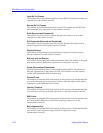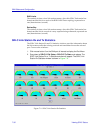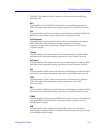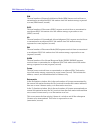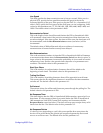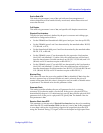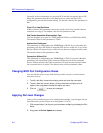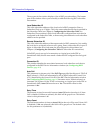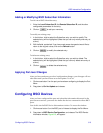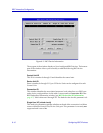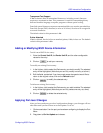
BSC Interactive Configuration
8-4 Configuring BSCI Ports
Error Retransmit Count
This Þeld speciÞes the number of times the FRX or SmartSwitch 1800 will resend a
block of data after the receiving device has detected an error in the block. The
default value for this parameter is 5.
NAK Retry Count
This count speciÞes the number of times the FRX or SmartSwitch 1800 will send a
frame when the receiving device is returning a NAK (negative acknowledgment).
Multidrop
If this parameter is set to Yes, the transmission will be multidrop (where there are
several stations between end points); if No, the transmission will be
point-to-point. The default value for this parameter is No.
Slow Poll Retry Count
This Þeld is conÞgurable only for ports conÞgured for multidrop (see Multidrop
parameter above). It speciÞes how many times a control unit (CU) that is not
responding will be polled before it is put on the slow poll list. CUs on the slow poll
list are polled with a frequency determined by the Slow Poll Retry Frequency
parameter (see below). The default value for this parameter is 20.
Slow Poll Retry Freq
This Þeld is conÞgurable only for ports conÞgured for multidrop (see Multidrop
parameter above), and determines the frequency that control units (CU) on the
slow poll list are polled. It speciÞes the number of times active CUs will be polled
between pollings of the CUs on the slow poll list (see Slow Poll Retry Count,
above). The higher the number, the more times active CUs will be polled, and the
less frequently CUs on the slow poll list will be polled. The default value for this
parameter is 20.
Use EBCDIC
This read-only parameter indicates that all devices on a line will use the EBCDIC
character set for session polls. Because the FRX and SmartSwitch 1800 only
support the EBCDIC character set, this value is always set to Yes.
Call Info in Request Packet
This read-only parameter is set to Yes, and indicates that call information will be
included in a call request packet.
Transparent Text Supported
This read-only parameter is set to Yes, and indicates that all transmitted
characters, including control character sequences, will be treated as data.
This parameter is useful for transmitting binary data and machine language
computer programs without special coding. Data-link control character sequences
transmitted this way must be preceded by a Data Link Escape (DLE) character (a
value of 10 in hex) in order to be recognized as control characters.



